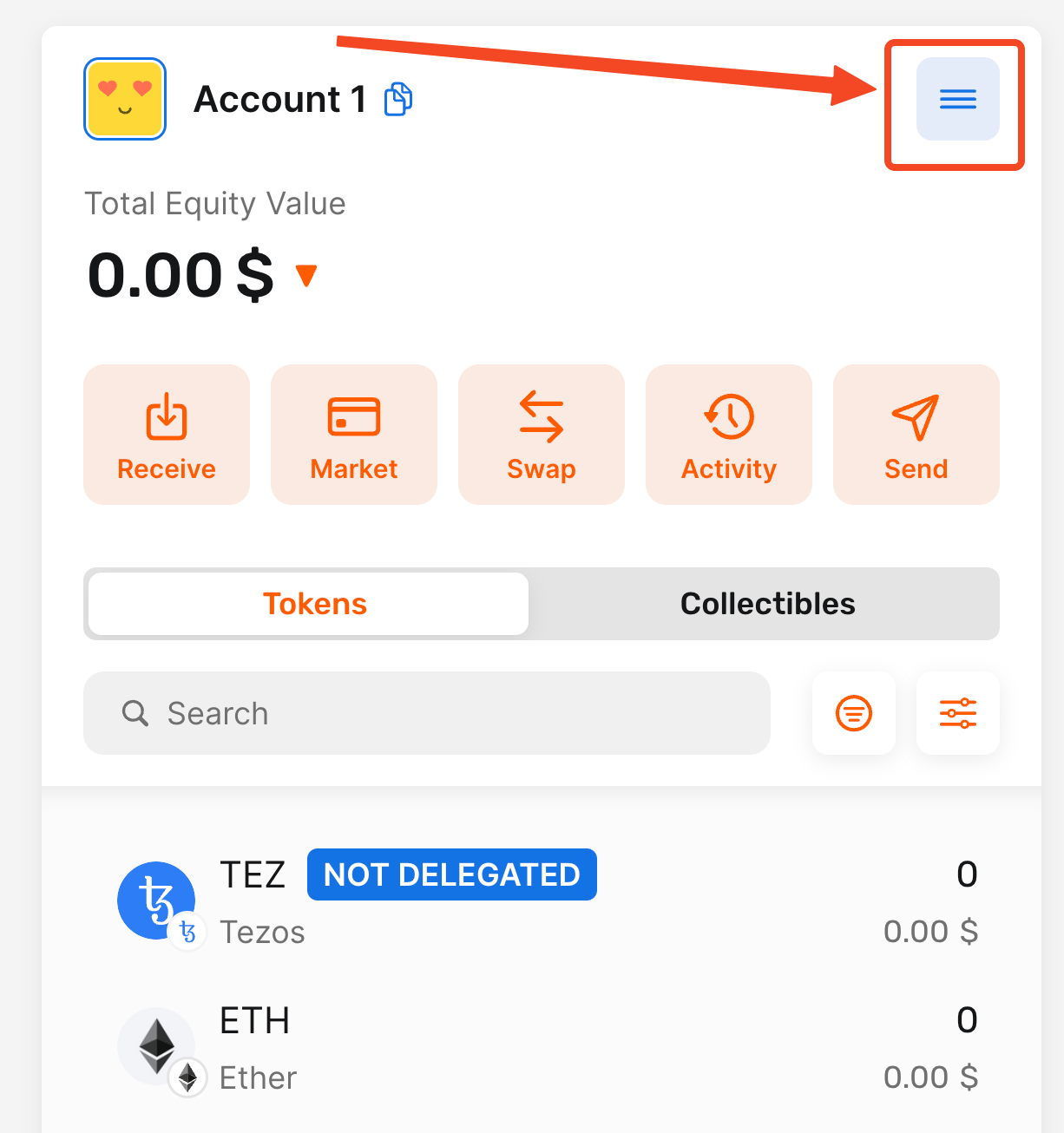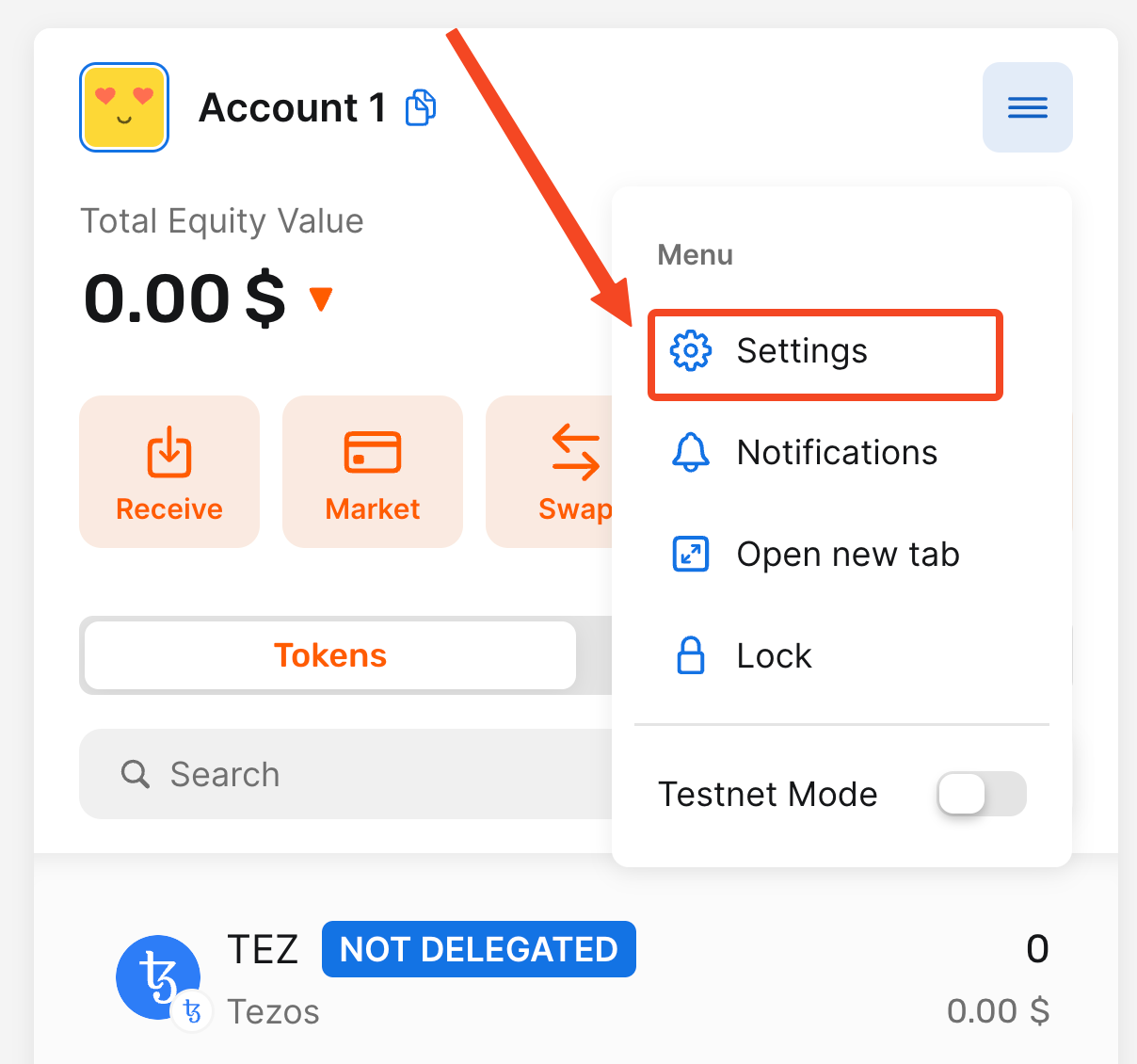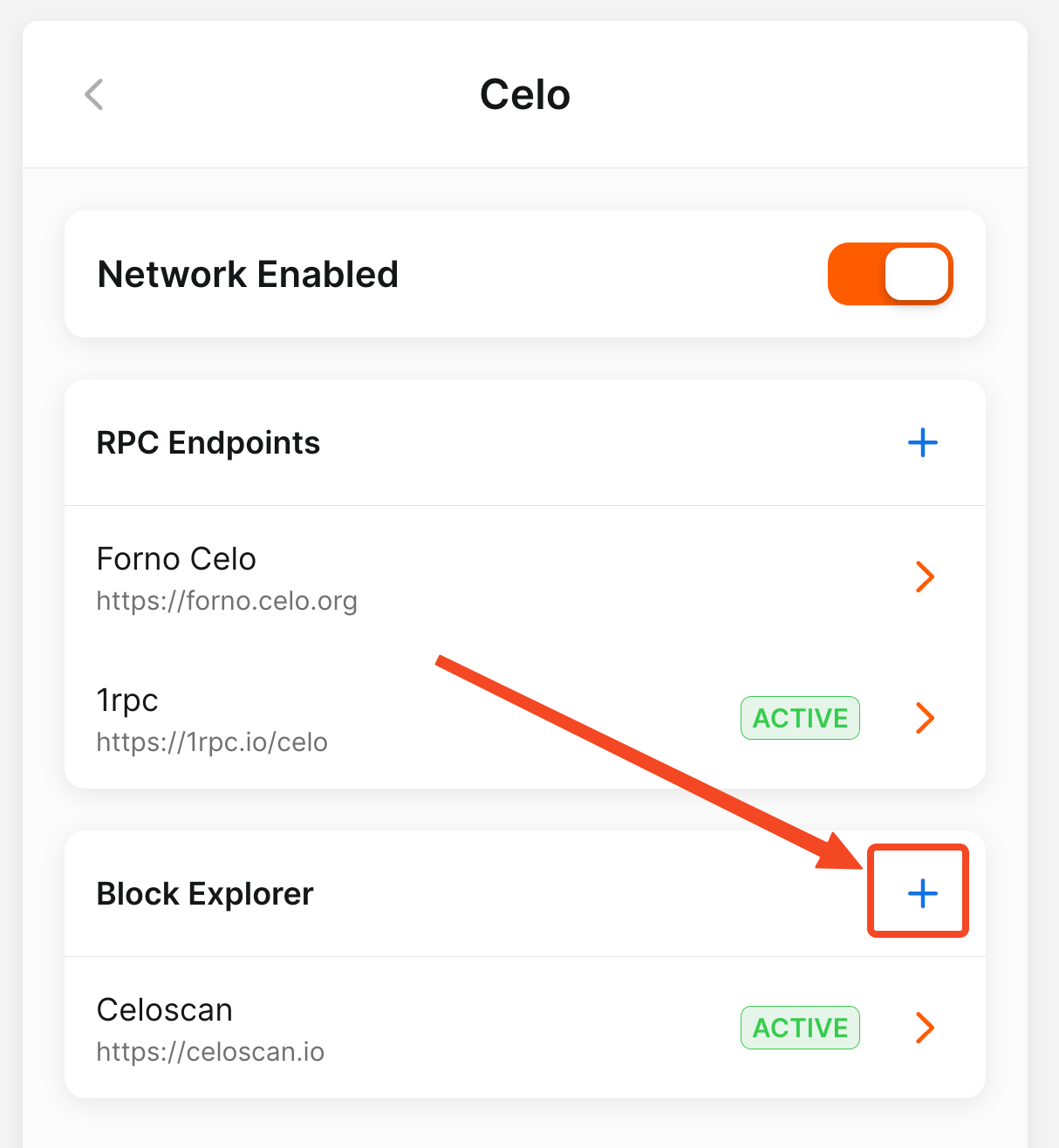How to Change the Default Block Explorer in the Temple Wallet
Learn how to easily change the default block explorer for any network (Tezos or EVM) in your Temple Wallet. Follow our step-by-step guide to customize your settings and choose your preferred explorer for viewing blockchain data.
1. Open your Temple Wallet Extension and click on the Menu icon
By clicking on the Menu icon, you will open the Menu dropdown with a lot of necessary options on how to manage your wallet.

2. Click on the Settings option
Click on the Settings option in the Menu dropdown to open the settings in the Temple Wallet Extension.

3. Click on the Networks option
Click on the Networks option to open the Networks page.

4. Click on the network that you want to change
Click on the network in the Default Networks or Custom Networks section that you want to change.
For our example, we will click on the Celo network that we have added in the guide listed below.


5. Click on the plus (+) button in the Block Explorer section
Click on the plus (+) button in the Block Explorer section to start the process of adding a new block explorer.

6. Insert the Name and URL of the block explorer
Enter (insert or paste) the block explorer name in the Name field and the block explorer URL in the URL field.

7. Check the Active checkmark and click the Save button
If you want to activate the new block explorer instantly, check the Active checkmark at the bottom of the page, and your new block explorer will be used as the default block explorer in the wallet for that network. Then click the Save button.
For our example, we will use the following configuration of the new block explorer:
- Name - 1rpc
- URL - https://celo.blockscout.com/

8. Verify the successful addition and activation of the block explorer
After saving the new block explorer, you will see a green notification with the Block explorer added text at the bottom of the page, and your new block explorer will have a green label with the ACTIVE status.

Conclusion
Mastering your Temple Wallet involves customizing its features to best suit your needs, and as this guide demonstrates, changing the default block explorer is a straightforward yet powerful way to enhance your experience. You've now successfully learned how to navigate the Temple Wallet settings, select specific networks – whether default or custom-added – and add or switch your preferred block explorer.
This flexibility is particularly valuable given Temple Wallet's robust multichain capabilities, seamlessly supporting both the Tezos ecosystem and a wide range of EVM-compatible blockchains. Whether you're interacting with Tezos, Ethereum, Celo (as shown in our example), Polygon, Binance Smart Chain, Etherlink, or other EVM networks added to your wallet, the process for configuring the block explorer remains consistent.
By following the steps outlined – accessing Settings, navigating to Networks, selecting your target network, using the plus (+) button to add a new explorer, and entering its Name and URL – you gain greater control over how you verify transactions, inspect addresses, and interact with blockchain data. Choosing to activate the new block explorer immediately or save it for later provides further convenience.
Remember, you can add multiple block explorers to the list for any given network and switch between them as needed, although only one can be Active as the default at any time. This customization allows you to use your preferred tool, perhaps one offering specific features or a familiar interface like Blockscout, Etherscan, TzKT, or others, directly integrated within your Temple Wallet workflow.
Successfully changing your default block explorer in Temple Wallet empowers you to tailor your interaction with different blockchains, ensuring your multichain wallet aligns perfectly with your workflow and preferences across the diverse Tezos and EVM ecosystems. Keep exploring Temple Wallet's settings to discover further ways to optimize your decentralized journey.
